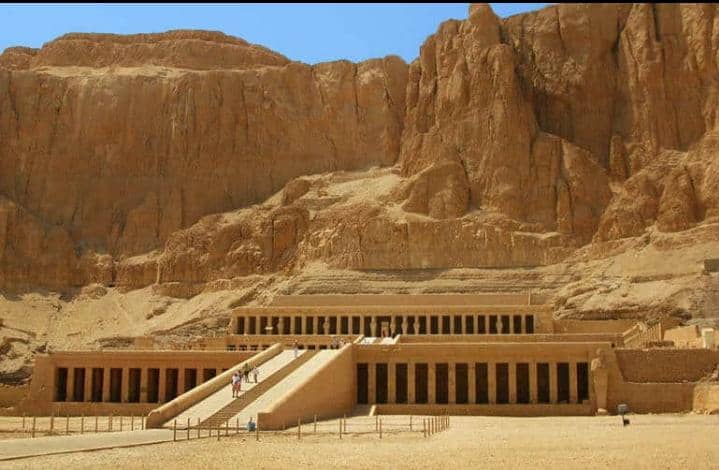The Valley of the Kings, also known as the Valley of the Gates of the Kings, is a renowned archaeological site located on the west bank of the Nile River, opposite the ancient city of Thebes (modern-day Luxor), in Egypt.
This valley served as the principal burial place for the pharaohs and powerful nobles of the New Kingdom, a period spanning from the 18th to the 20th dynasties (1539-1075 B.C.).
The valley is situated in the heart of the Theban Necropolis and consists of two main sections: the East Valley, where the majority of the royal tombs are situated, and the West Valley, also known as the Valley of the Monkeys. The valley is surrounded by steep cliffs and is dominated by the pyramid-shaped mountain peak of al-Qurn (The Horn).
This secluded location, easy to guard and associated with the afterlife by the ancient Egyptians, was chosen by the 18th-dynasty pharaohs for their royal burials.
The valley is known to contain 65 tombs and chambers, ranging from simple pits to complex structures like KV5, which alone has over 120 chambers for the sons of Ramesses II.
The tombs are decorated with traditional scenes from Egyptian mythology and reveal clues about the period’s funerary practices and afterlife beliefs. Almost all of the tombs seem to have been opened and robbed in antiquity, but they still give an idea of the opulence and power of Egypt’s pharaohs.
READ ALSO: Fela Kuti: The Afrobeat King Who Fought Corruption Through Music
The Valley of the Kings has been a focus for Egyptologists and archaeological exploration since the end of the 18th century. The valley garnered significant attention following the discovery of the tomb of Tutankhamun in 1922 by Howard Carter, and it is one of the most famous archaeological sites in the world. In 1979, it became a UNESCO World Heritage Site alongside the rest of the Theban Necropolis.
Exploration, excavation, and conservation continue in the area, and a new tourist center has recently been opened.
The valley has suffered great damage from treasure hunters, floods, and mass tourism in recent years, affecting the reliefs and pigments of the wall paintings.
The Department of Antiquities has installed dehumidifiers and glass screens in the worst-affected tombs and introduced a rotation system for opening some tombs to the public while restoring others.
The Valley of the Kings remains a testament to the grandeur and beliefs of ancient Egypt’s royal dynasties, offering a glimpse into the afterlife preparations of its pharaohs and providing valuable insights for Egyptologists and historians alike.

